We spent a noisy, hectic, enjoyable week in Lima, Peru as a stopover to line up cheap airfares from Cancun, Mexico to Buenos Aires, Argentina. The weather reminded us of Seattle even though the landscape was almost the opposite. Arid brown and gray foothills lead up to the Andes, but each morning a light layer of Pacific fog rolled a few miles inland and enveloped Miraflores and the days usually had a cool, salt-smelling sea breeze near the water.
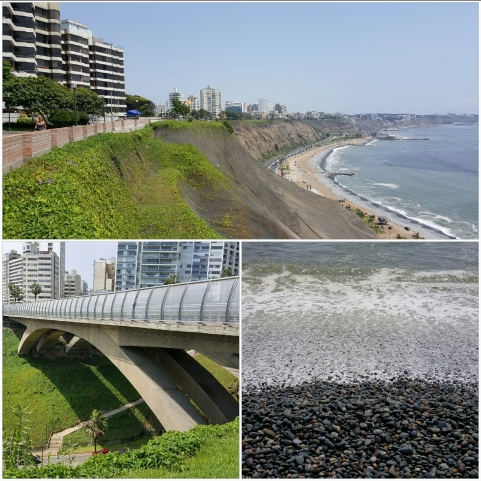
A main attraction was the food, which seems to be revered all around Latin America. In Lima, the local speciality is seafood ceviche. We had several kinds, but our favorite contained seabass. The raw fish is cooked in lime juice; corn, hot! peppers, onions, and sometimes potatoes and plantain chips are added to the mix. Locals also use seafood in other creative ways, including chupe de camarones, a shrimp soup with corn, potatoes, and a fried egg on top. We bought some species of local trout at a supermarket, and it rivaled the salmon we miss so much.
Outside of seafood, the aji de gallina is a perfect lunch on a cooler day. Chicken is shredded (so finely it took me a while to realize it was actually in the dish) into a yellow pepper sauce and served with rice. Anticuchos, marinated beef hearts, are a surprisingly tasty appetizer. Alpaca makes the menu as well, and wasn’t as gamey as we were led to believe; in fact, it was quite tender. And of course, cuy an infamous Peruvian dish. It is more of a mountain-region fare, so in Lima it is served mainly in expensive, tourist-oriented restaurants. But we didn’t let that deter us and baked one at home. Equally adorable and delicious, it does take a lot of effort for a small meal.
To go with the food, Inca Kola is often the drink of choice. It tastes like bubble gum with an undertone of cream soda; it’s a good thing I wasn’t exposed to this as a child – I might actually drink soda. It is so popular that Peru is one of the few places in the world where Coca-Cola is outsold (though they have since bought the company that produces Inca Kola). If not that, the second national drink is the pisco sour. I usually don’t like cocktails, but this one goes well with the local cuisine. Artisanal beer is a growing industry; we tried some at Nuevo Mundo after we saw it advertised on their delivery van and then accidentally found their bar.
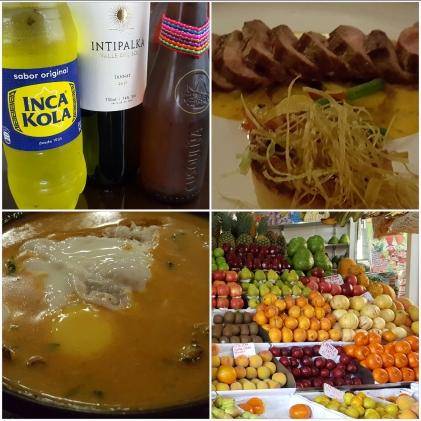
Everyone we met asked if we were going to Machu Picchu. Sadly, that will have to be future adventure, but we still wanted to see some of the pre-Incan and Incan treasures that are the national heritage. The Museum of Archaeology, Anthropology, and History was our starting point. Their collection is the smaller of the two museums we visited, but it also covers colonization, the fight for independence, and the era of the republic.
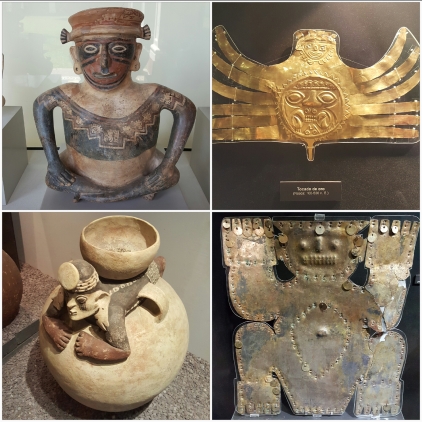
The Larco Museum displayed the larger collection of Pre-Columbian artifacts (it was also the more expensive admission). The majority of both collections is pottery, which survives well and didn’t tempt conquistadors to melt it down and ship it out of the country. I don’t know what I was expecting, but it is fantastic. There is pottery with alpacas that look like corgi puppies, guys relaxing on their boat with a drink (yes, really), people with animals, animals that look like people, erotic scenes, human sacrifices, maize plants, and plenty of other creatures and human faces in various states of stylization. My personal favorite is the man lying on the top of a pot with the mouth of the vessel coming out of his back, like he was bothering the potter at work and got stuck in the clay.
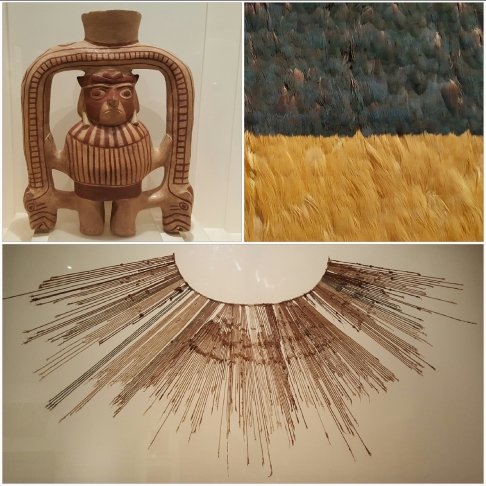
There are also fabrics, preserved by the dry climate; even cloaks and shirts made of tiny feathers have lasted. Colors look as though they were dyed yesterday and feature patterns that seem modern. Many pieces are from burials; the afterlife was just as important in this corner of the world as it was in ancient Egypt. Mummy bundles were a common way of interring bodies, the individual wrapped in layer upon layer of cloth and with items they would need after death.
A wonderful thing about the Larco is that they display the most interesting pieces in the museum proper, but you can also look at most of the rest of the collection as well; it is one of the very few museums in the world that let you wander around their storerooms. There are scores of floor-to-ceiling glass cases filled with objects. Each item is grouped by what it depicts. Two cases were entirely devoted to owls, others more to ducks, some to fish; full walls of pottery featured human faces, or polka dots.
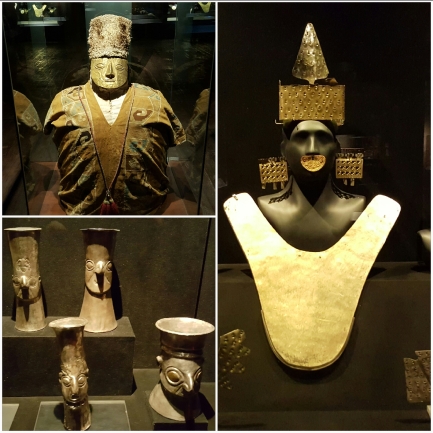
A 40-minute ride from Miraflores is the Basilica of San Francisco, a beautiful church in the Lima District. No pictures are permitted inside its monastery or museum, a tour of which also goes through the catacombs below (where 25,000 bodies are buried). But inside the church photography is allowed, and its design certainly welcomes artists. The church’s interior features gorgeous wooden altars along the sides that reach high enough to bend with the domes above. Many are dedicated to Mary and Latin American saints. The ceiling of the church is unique among those we’ve seen – stark red and white patterning that is reminiscent of the surrounding landscape and ancient pottery.
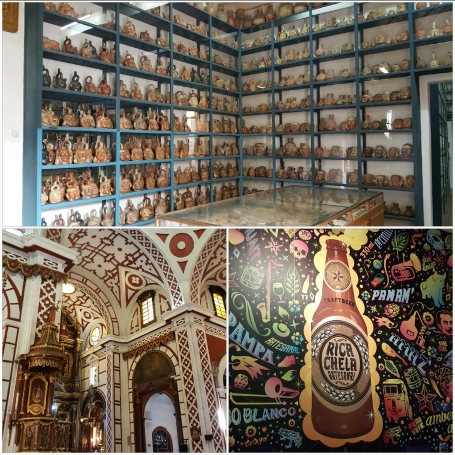
If you do not like insane traffic, Lima may not be for you. We caught a local bus outside the airport and spent over 90 minutes making our way to Miraflores. We arrived at rush hour, so traffic was at its peak, but that stops exactly zero people from driving as though they are participating in a vehicular game of chicken. Our driver wedged the bus between lanes, in spaces meant for motorbikes, and in front of mobs of other cars to make stops. Approximately 60 near-collisions later, we jumped off in our neighborhood. Honestly, it was one of the better free entertainment experiences we’ve had. The taxi back to the airport was the same way, though his habits leaned toward running red lights.
Overall, though, Lima is a city of millions and feels like it. Stores are open til all hours of the night, the city center is crowded around the clock. Poverty and wealth are shockingly close to each other – shantytowns rise up hillsides visible from new condominiums built for the rich. Food, art, work, and neighborhoods all blend and mix together. It is overwhelming and engrossing all at once.